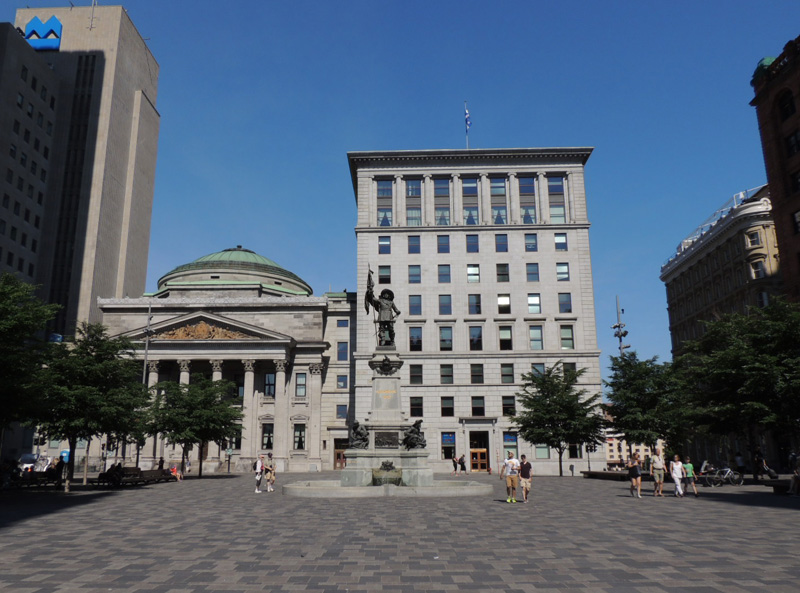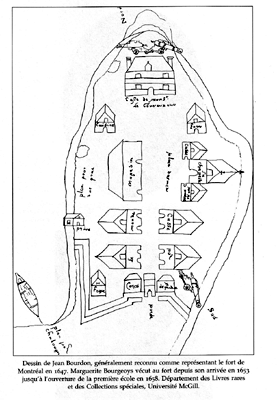Source: Photograph by WTL© on site in Montréal (2016).
Image: This photo was taken looking north across the Place d'Armes with a commemorative monument to Maisonneuve featured (honored) in the center. The building across the Place d'Armes is the BMO Banque de Montréal. The monument was created by French-Canadian sculptor Louis-Philippe Hébert (1850-1917) in 1895 on the occasion of the 250th anniversary of the founding of Montreal in 1642.
Comments: Paul de Chomedey sieur de Maisonneuve (1612-1676) founded Montréal in the French colony of Nouvelle-France (New France) in 1642. He was from Champagne, the same French region that Marguerite Bourgeoys was from (see: => Montreal #4). In 1642 he was hired to establish a mission for the Société Notre-Dame de Montréal on the island of the same name up-river
from Québec in the Saint-Laurent river. He built a small stockaded settlement called (Fort) Ville-Marie (Montréal's first name and currently the name of the oldest—and now tourist-centered—neighborhood) on the shore below the mount with a chapel and a few other key buildings. As first governor of Montréal (1642-1666) he established and maintained peace with the indigenous Algonquin people and most of the neighboring tribes, but not with the Iroquois and Mohawk people, the latter who lived in what is today upper New York state. Until 1666 Montréal was a purely religious settlement run by Maisonneuve and, from 1653, by Marguerite Bourgeoys and her non-cloistered sisters of the Société de Notre-Dame de Montréal. In 1666, Maisonneuve returned to Paris where he lived and died in relative obscurity. Despite the monumentality of the above statue, it is a mistake to say that Maisonneuve alone was responsible for founding Montreal. He was accompanied by a French nurse, Jeanne Mance (1606-1673). Notice the sculpture on the lower left side of this monument. It represents Jeanne Mance. For a separate presentation of this co-founder of Montreal, who, no doubt deserves a monument of equal importance as the one you see here, see: => Montreal #2a.
Here is a drawing of the original settlement:
The Saint-Laurent river is to the right (north-south axis); the chapel is the larger building on the right (W); the governor's residence is at the top (N); the store (magasin for goods and ammunition) is the larger building left center (E); the main gate is at the bottom (S) with two guard houses flanking the gate (porte); a boat landing with a chaloupe (with a sail, oars, for river transport) is depicted at the lower left.
Humanities Question: Comment on the various you detect in this image that reflect the old-new aspect of Montreal, knowing that the basilica is behind the photographer.
|





